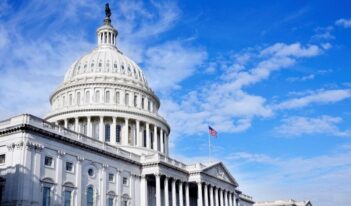
The Trump Administration’s embrace of a seldom-used law may undermine future regulatory efforts.
Up until just a few months ago, the Congressional Review Act (CRA) was an obscure statute that had been used by Congress exactly one time in its 20-year history. Now, in the opening months of the Trump Administration, it has already been used to repeal seven Obama Administration regulations—and the total number of rules that ultimately will be repealed under the CRA will almost certainly climb higher. Although other issues have dominated the headlines, these regulatory repeals arguably constitute the Trump Administration’s chief domestic policy accomplishment of its first 100 days.
The level of legislative activity under the CRA has been greater than many experts—including myself—had predicted. Between Congress’s scant track record under the CRA, the constraints imposed by a crowded Senate calendar, and the limitations of the CRA’s carryover provision—which enables a new Congress only to repeal major regulations that had been issued during the last 60 session days of the previous session—it seemed, at first, that the CRA would remain a rarely deployed statute this year. And yet U.S. Senate Majority Leader Mitch McConnell (R-Ky.) has successfully managed the floor of the Senate to allow for the passage of far more CRA resolutions than we anticipated.
One unforeseen consequence of this wave of CRA resolutions is that federal agencies in future presidential administrations likely will have a heightened awareness of the CRA—and may seek to push up their rulemaking timelines in the process. Congress has little incentive to use the CRA in times other than presidential transitions because presidents will almost certainly veto any attempt to overturn their own administration’s regulations. This means that, effectively, the CRA is used only to overturn the oft-derided category of “midnight regulations” that are issued in the waning days of a presidential administration (and, even then, probably only when control of the White House is changing hands, from one political party to another).
Historically, midnight regulations have been defined as those regulations issued after Election Day and before the inauguration of the new president. Previous presidents had been aware of the potential threat that the CRA posed to their final acts in office. For example, President Bush’s Chief of Staff, Joshua Bolten, instructed agencies that only under “extraordinary circumstances” should they issue regulations after November 1, 2008. President Obama’s Administrator of the Office of Information and Regulatory Affairs, Howard Shelanski, took a similar action, telling agencies to “strive to complete their highest priority rulemakings by the summer of 2016.”
Still, neither Bolten nor Shelanski explicitly mentioned the Congressional Review Act in their memos to agencies. The message about the CRA may have been implicit, but it was also probably too subtle—after all, federal agencies have not been terribly vigilant about protecting their regulatory actions from repeal under the CRA.
This appears to have been particularly true for the Obama Administration, which had employed regulation as a policy tool far more enthusiastically than its predecessors had. And although the Obama Administration did manage to issue some controversial rules before the CRA window had opened—such as the U.S. Department of Labor’s rules on the fiduciary obligations of investment advisors and on overtime pay—the number of CRA resolutions that President Trump has signed so far indicate that Obama Administration agencies issued many rules within the CRA’s window of vulnerability.
Agencies learn over time, however, and the lesson of this year’s CRA resolutions will not be soon forgotten. Future administrations may treat the CRA deadline like previous administrations treated the end of an administration. Instead of putting regulations to bed when the proverbial rulemaking clock strikes midnight, expect administrations to tuck more of them in when that clock strikes closer to, say, 10:00 p.m. (The precise time for the earlier deadline will vary, as the CRA window of vulnerability for repeal entirely depends on when Congress is in session. Perhaps this means, then, that more agencies, out of an abundance of caution, will try to wrap up their rulemakings by 9:45 p.m.)
In the past, scholars criticized midnight regulations for having lower net benefits, arguing that the regulatory impact analyses that accompanied these rules were often inferior to the analyses that accompanied other rules. Unfortunately, finalizing regulations still earlier in the last year of a presidential administration may only exacerbate these problems. If agencies feel even more rushed in the future to finalize their regulations, the quality of those regulations—and the required analysis to support them—is likely to suffer. Put another way, although these regulations might get to bed earlier, there is no guarantee that they will wake up looking better.
From the agencies’ perspective, of course, rules that are finished well before midnight will at least wake up—and not be susceptible to repeal by an incoming Congress and a new administration with a different regulatory agenda. With the flurry of activity under the CRA in these opening days of the Trump Administration, agencies are likely beginning to appreciate all too well the high stakes of waiting to finish rules until the end of an administration.
Indeed, not only does President Trump’s signing of CRA resolutions mean that the affected rules no longer exist, but the CRA specifically precludes agencies from resurrecting disapproved rules or issuing any other rules that are “substantially similar” to them. When faced with the prospect of losing not only late-finished rules but also the authority to ever re-issue the regulation, agencies likely will rush even more rules through the rulemaking process in the final years of future administrations, so as to avoid the risk of disapproval under the CRA.
In the end, rather than improve rulemaking, the CRA process may actually now lead, every four years, to more hastily developed regulations that come at the expense of the high level of regulatory effectiveness and efficiency that the public deserves.




